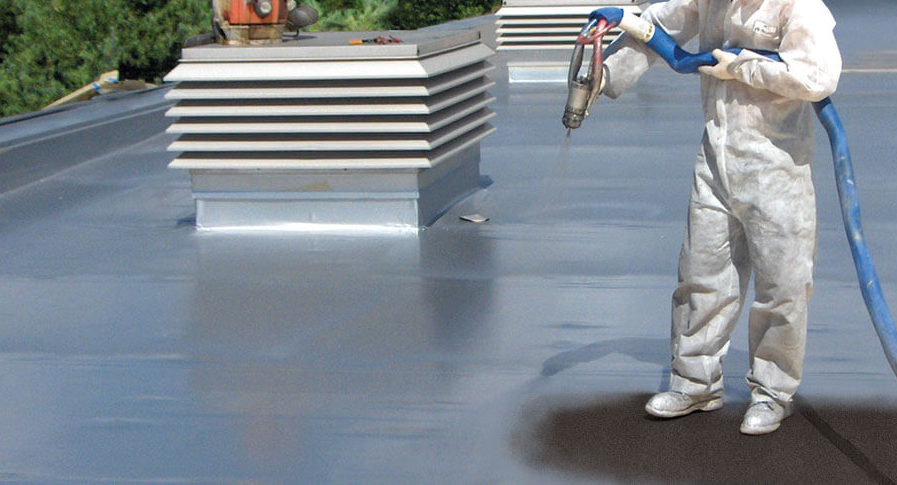What Are Polyurea And Epoxy?
Polyurea and epoxy share the same stage but play two distinct roles. Polyurea is all about peak performance – it’s fast, flexible, and built to last for up to several decades. Born from a quick-reacting blend of only two components, polyurea creates a tough and elastic surface that thrives in high-stress, high-demand environments. This sees polyurea used anywhere and everywhere a surface can benefit from extra protection, from tank waterproofing to industrial flooring and truck bedlining; polyurea is always up for the challenge. On the other hand, epoxy takes a more “methodical” approach. It’s a thermosetting polymer that cures far more slowly than polyurea, resulting in a rigid but durable finish. This makes epoxy a popular choice for projects like garage floors or decorative concrete where there’s room to take your time and the final product should be sleek and glossy. Both coatings have their strengths, but their distinct personalities make them better suited to different applications. Let’s see how they stack up.
What Are Polyurea And Epoxy?
Polyurea and epoxy share the same stage but play two distinct roles. Polyurea is all about peak performance – it’s fast, flexible, and built to last for up to several decades. Born from a quick-reacting blend of only two components, polyurea creates a tough and elastic surface that thrives in high-stress, high-demand environments. This sees polyurea used anywhere and everywhere a surface can benefit from extra protection, from tank waterproofing to industrial flooring and truck bedlining; polyurea is always up for the challenge. On the other hand, epoxy takes a more “methodical” approach. It’s a thermosetting polymer that cures far more slowly than polyurea, resulting in a rigid but durable finish. This makes epoxy a popular choice for projects like garage floors or decorative concrete where there’s room to take your time and the final product should be sleek and glossy. Both coatings have their strengths, but their distinct personalities make them better suited to different applications. Let’s see how they stack up.
A Few Key Differences Between Polyurea and Epoxy
When comparing polyurea and epoxy the contrast lies in their performance under pressure, both literally and figuratively. Polyurea cures at lightning speeds – often starting in seconds and well under way in as little as a few minutes – making it the go-to option for projects where more downtime isn’t an option. Compare this to epoxy, which does certainly take its time, curing over many hours or even several days. This can be a big drawback for fast-paced environments but does work well for projects that require precision or multiple layers. Another clear dividing line is flexibility, where epoxy’s impressive strength is offset by its rigidity, meaning it’s more prone to cracking under shifting surfaces, extreme temperature changes, or the like. Polyurea, with its elastic properties, absorbs more stress without breaking to make it the better fit for applications with frequent movement or thermal cycling. Lastly, their varying chemical resistivities is another key and clear difference between the two protective coatings. Epoxy does indeed perform well in less demanding environments, but polyurea takes durability to the next level – resisting abrasions, corrosive chemicals, and moisture even in extreme conditions. So choosing between them boils down to balancing speed, flexibility, and environmental demands.
When To Choose Polyurea or Epoxy
Deciding between polyurea and epoxy isn’t necessarily about finding the “better” coating – it’s about choosing the right tool for the job. If speed is a top priority, then polyurea is the clear winner. Its rapid curing means you can have it applied and back to business quicker than with almost any other commercially available protective coating, notably without compromising on quality or performance. If time is something you have more of, or your project prioritizes a smooth or polished finish, then epoxy is likely the best choice. They’re a leading choice for the aforementioned garage floors or decorative concrete, as well as other areas where aesthetics take the lead over functional strength. For environments prone to shifting temperatures, high-traffic, or chemical exposure, polyurea’s combined toughness and flexibility usually make it the superior choice. But if budget constraints are a major factor the epoxy’s affordability can make it a practical solution for those less demanding applications. It’s all about matching the coating project to the coating solution!
FREQUENTLY ASKED QUESTIONS
Can you combine polyurea and epoxy?
It’s possible to install polyurea-epoxy hybrid systems, using polyurea on top of an existing epoxy coating. Doing so may require some additional and more unique surface modifications to allow for strong adhesion between the two materials, but there are certainly instances where you won’t need to decide between them – you can use both at the same time!
Is epoxy better looking than polyurea?
Beauty is in the eye of the beholder, and there’s no doubt that epoxy and polyurea each possess their own unique aesthetic. But in terms of visual customization, the two are neck and neck, as both are known for being highly tailorable and can come in numerous colors and finishes. We think polyurea has the edge over epoxy, but both look great when applied correctly and well integrated with other design features.
Is polyurea better than epoxy?
Polyurea is no better than epoxy, and epoxy is no better than polyurea; the better coating is always a function of the intended application, making both the best choice for some projects and the worst for others. Overall, polyurea is a higher performing and more versatile technology as compared to polyurea, but epoxy has its place, namely for DIY projects or less demanding use cases.




